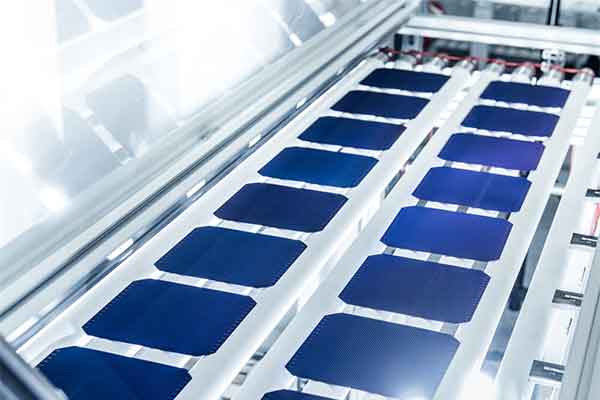MEXICO: Canadian Solar unveils 63-MW award from Mexican auction
Canadian Solar Inc (NASDAQ:CSIQ) has won a 63-MWp solar project in Aguascalientes, Mexico, as part of the energy auction held last week.
The company said in a press release that once the solar plant is up and running, supposedly in September 2018, it will be selling its output and generated clean energy certificates to state-owned Comision Federal de Electricidad (CFE) under 15-year and 20-year contracts, respectively. The agreed price is USD 47.95 (EUR 42.04) per MWh.
As previously announced, Enel Green Power was the biggest winner with about 2.25 TWh of annual solar power output contracts in the auction. The list of winners also includes SunPower Systems, Recurrent Energy, Vega Solar and JinkoSolar. Overall, about 4 TWh of annual power deals were awarded.
WASHINGTON, DC: World Bank to help developing countries deploy 30 GW renewables by 2020
The World Bank Group adopted its Climate Change Action Plan which envisages, among other achievements, assisting developing countries in adding 30 GW of renewable energy by 2020.
Apart from supporting renewables deployment in developing nations, the bank also intends to mobilise about USD 25 billion (EUR 22bn) in private financing for clean energy by that year.
The World Bank’s International Finance Corporation (IFC) alone plans to raise its annual climate investments from the current USD 2.2 billion to USD 3.5 billion a year and to lead on leveraging USD 13 billion a year in private sector financing by 2020. The sectors in which IFC will grow its spending include grid-connected renewables, green buildings, industrial and commercial energy efficiency, and climate-smart urban infrastructure. It will also continue to use financial instruments and advice to expand into distributed renewables, off-grid energy access and climate-smart agriculture.
One of the World Bank’s planned moves involves forming special teams to assist countries in generating a pipeline of bankable projects focused on areas like rooftop solar and boosting the growth of distributed solar in Sub-Saharan Africa, it said.
The goal of the bank’s Climate Change Action Plan is to step up efforts to tackle climate change through 2020 and help developing nations deliver on their own climate pledges under the agreement reached at COP21 in Paris last December.
KENYA: Kenya’s REA to build 55-MW solar power plant
Kenya’s Rural Electrification Authority (REA) will build a 55-MW solar park in Garissa, eastern Kenya that, once completed, is expected to be largest solar power plant in eastern and central Africa.
The authority said its board has approved the construction of the KES-12.8-billion (USD 126.2m/EUR 111m) facility. The project will be financed through concessional funding from the Chinese government, according to the announcement.
Construction is due to start in July 2016 and be completed in a year. The installation will consist of 210,210 solar panels of 260 W each, expected to generate enough electricity to power a whopping 625,000 homes.
Kenya was listed among the “Rising stars” in the latest Ernst & Young (EY) country ranking in February in terms of attractiveness for all renewables along with 10 other markets, including India, Chile and Morocco. So far Kenya has focused on its geothermal resources in the Rift Valley, but it also has wind and projects in progress.
AUTRALIA: World’s renewable capacity grows by record 8.3% in 2015 – IRENA
The world’s renewable electricity capacity increased at a record-high rate of 8.3% in 2015 as falling technology costs spurred solar and wind deployment, the International Renewable Energy Agency (IRENA).
Renewable power generation capacity expanded by 152 GW last year, with wind providing 63 GW of the increase and solar 47 GW. The two technologies grew at rates of 17% and 37%, respectively. Onshore turbines are now up to 45% cheaper than in 2010, while the prices of solar modules have dropped by up to 80% during the same period, the agency noted.
According to its statistics, the world had 1,985 GW of renewable capacity at the end of 2015, with hydropower accounting for the largest part — 1,209 GW. There was 432 GW of installed wind capacity and 227 GW of solar. Other renewables included 104 GW of bioenergy, 13 GW of geothermal energy and about 500 MW of marine energy.
Developing countries experienced the fastest growth in renewable capacity in 2015, with Central America and the Caribbean growing at a rate of 14.5%. Asia expanded at a rate of 12.4%, while in Europe and North America, capacity increased by 5.2% and 6.3%, respectively.
Asia saw a 48% jump in solar capacity as China added 15 GW and Japan 10 GW. With 8 GW of solar additions North America outstripped Europe, which installed 7.6 GW last year.
About 95% of wind capacity is now located in Asia, Europe and North America but wind energy is also starting to expand rapidly in other regions such as South America, IRENA said.
“Renewable energy deployment continues to surge in markets around the globe, even in an era of low oil and gas prices,” said IRENA director-general Adnan Z Amin. “This impressive growth, coupled with a record USD 286 billion invested in renewables in 2015, sends a strong signal to investors and policymakers that renewable energy is now the preferred option for new power generation capacity around the world,” he added.















Comments